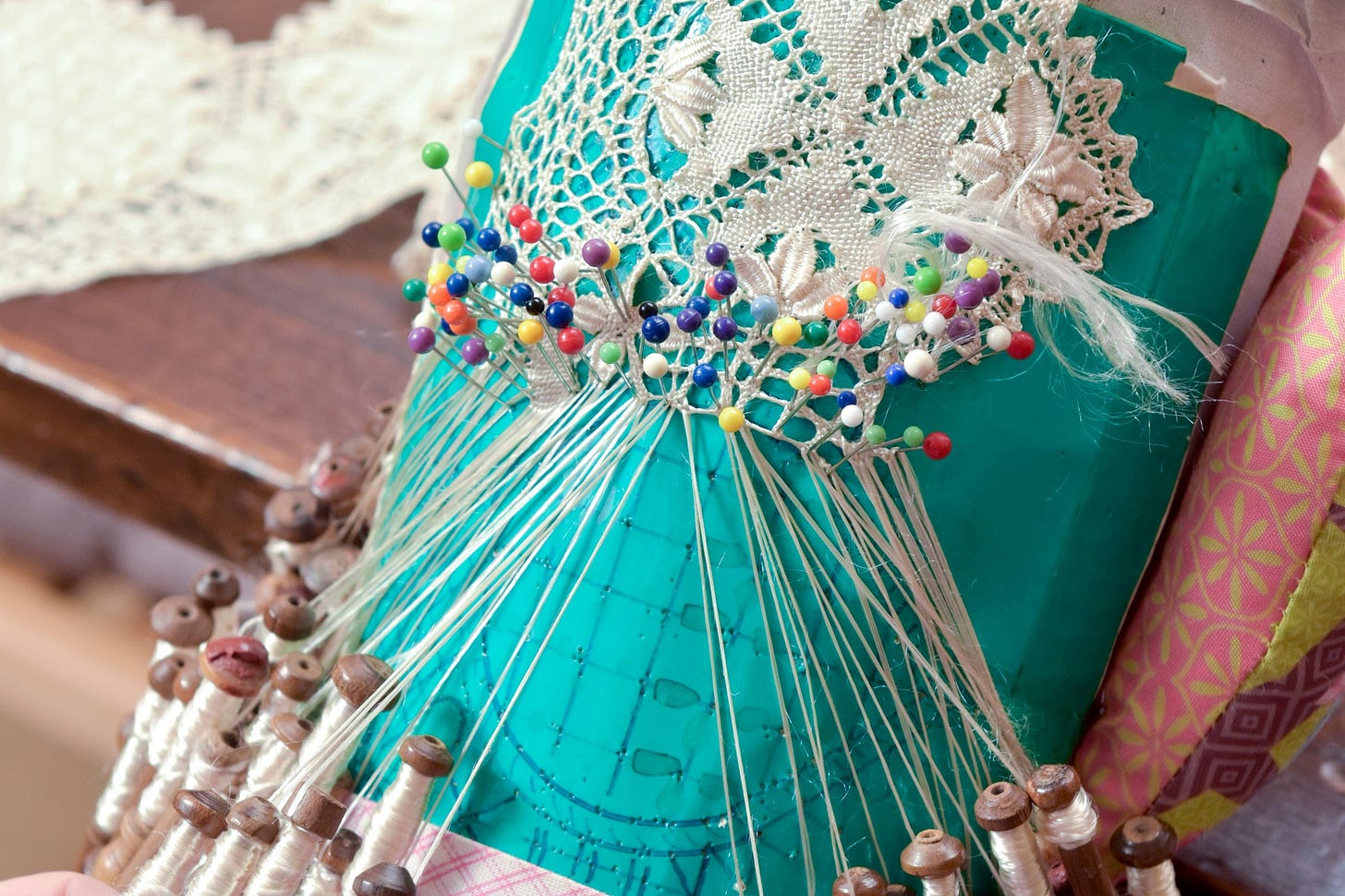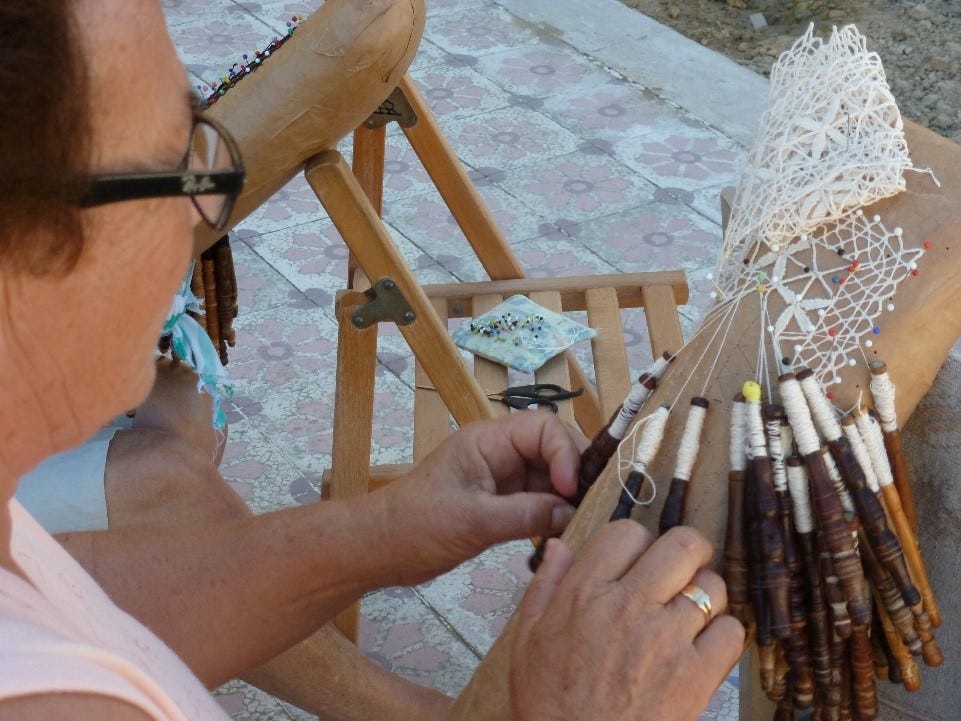Lace Making
This weeks newsletter will probably be of more interest to the ladies, but you men can always explore your hidden feminine side too!!!
Maltese lace is a traditional form of lace making that has been practiced in Malta since the 16th century. It is characterised by intricate patterns, often featuring animals and flowers. The lace is made by hand using needles, threads and bobbins.
The craft is traditionally taught through generations, as only a few lace makers remain, the craft is in danger of being lost. Maltese lace is a unique form of art and has been used to adorn clothing, curtains, tablecloths and other items. It is a symbol of Maltese culture and heritage, and is highly valued both locally and internationally. As you would expect, like most things in Malta, lace making was brought to the country by the Order of the Knights of St John, and was practised by the local women, and was initially concentrated in Valletta and its surrounding villages, but soon spread to Gozo, the sister island to Malta.
Lace Making in Gozo
It was mainly used to decorate the garments of the upper classes, and many of the pieces produced at the time were highly intricate and ornate. In the 19th and early 20th centuries, lace making was a major industry in Malta, providing employment for may people and contributing to the economy. The craft saw a revival in popularity in the late 20th century, with a new generation of Maltese lace makers and designers emerging, as more people discovered its traditional beauty and diverse uses. Today, lace making is still a beloved craft and it is used to adorn a wide range of traditional garments, including wedding dresses, christening gowns, and the Maltese national dress.
The Finished Work
Maltese Lace and National Dress
The Horse & Cart
Malta has a long history of horse and cart transport, known in Maltese as Il-Karozzin or Horsedrawn Carriage. Introduced in the mid 19th century, it wasn’t long afterwards, that carts pulled by horses and donkeys began to flourish in the streets and villages around Malta. Today, horse and carriages are available to take tourists on tours of Valletta and Mdina to try and give an idea of what things were like in the past.







